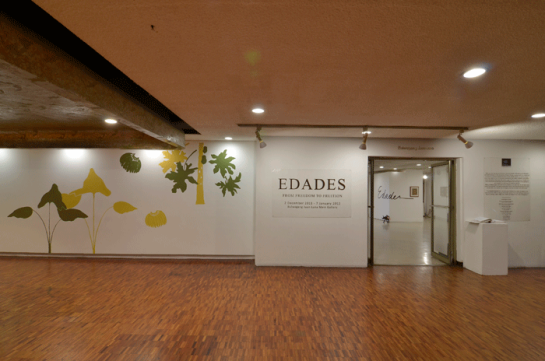
“Edades’ choice of scenes bereft of any attempt to ‘prettify’ showed the way to a new world. Edades opened the door to Modernist Art in the Philippines and did not close it afterwards. In the process of opening that door, his ideas also changed the tone of art discourse in the country—perhaps, with more far-reaching effect than is easily perceived.”
– Rod Paras Perez
The long journey of National Artist for Painting Victorio Edades (b.1895, d.1985) is not just a historical footnote: it chronicles several of the most critical points in Philippine art history and society.
Though born in the 19th century, Edades’ story continues to resonate with the modern generation. This exhibit threads through several aspects of Edades’ life: the seeds of growth in his idyllic yet troubled hometown of Bolosan, his transformation from an art student and migrant worker in the United States to being declared a National Artist in 1976, and the various fruits borne by his lifetime of labor and passion for learning: a body of paintings radical for their time and an entire generation of artists fired by the aspiration to set oneself free from chains.
In her biography of Edades, Lydia Ingle writes of the artist’s love for kites as a young child, back in Pangasinan before World War II. It was this same spirit to stand for freedom that later on guided his vision as a pioneer and leader of the Thirteen Moderns against the wave of academic conservatism in Philippine art. For Edades not only introduced Modernism into the Philippines; but also gave it guidance and related it to the need for national identity, which is in itself a manifestation of the desire for freedom.
“Modern art…has opened the eyes of progressive painters of the Philippines to the inadequacy of their artistic effort for many years in the past, and at the same time enabled them to see clearly in what direction they should go in order to achieve a genuine Philippine art,” he wrote in Liberating Ourselves from Academism, on September 19, 1948.
Throughout his life, Edades also maintained an affinity for nature, manifested in the earthy forms and hues and the persistence of foliage and fruits in his works. These also serve as a symbol for his journey until his demise in Davao on March 7, 1985 at the age of 89. Like a tree growing upwards towards the sky and bearing fruit, Edades has left us with works, insights, and aspirations that vastly enrich our own process of looking back at where we all started, as cultural workers and as Filipinos.
